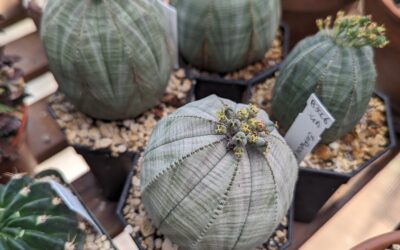Keeping with the theme of spherical Euphorbias, this little Euphorbia tubligans is a charming little plant I’ve had since the summer of 2019.
To help keep things confusing, Euphorbia tubligans is just the name I purchased this plant under; Google tells me I should mean Euphorbia tubiglans, but that result in search and in Llifle do not bring up anything that looks like what I have.
When purchased, it was small, and just starting to make what looked like little baby arms as appropriate for the species.
My Euphorbia
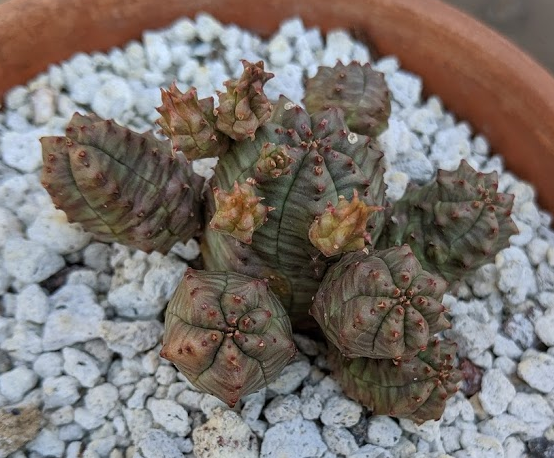
Internet Euphorbias
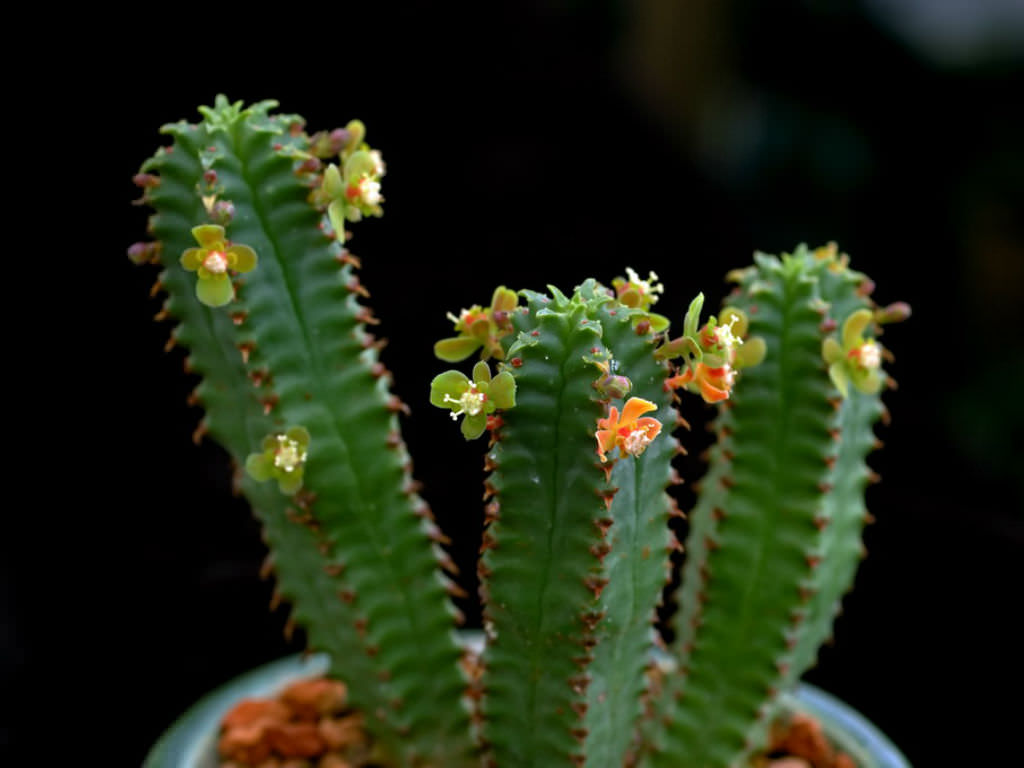
You can see how it looks like it’s just producing some baby arms, roughly 5 sided, that could conceivably be similar to the Euphorbia tubligans shown online. I had mine out in considerable sunlight, so it tanned darker than most of the plants I could find online.
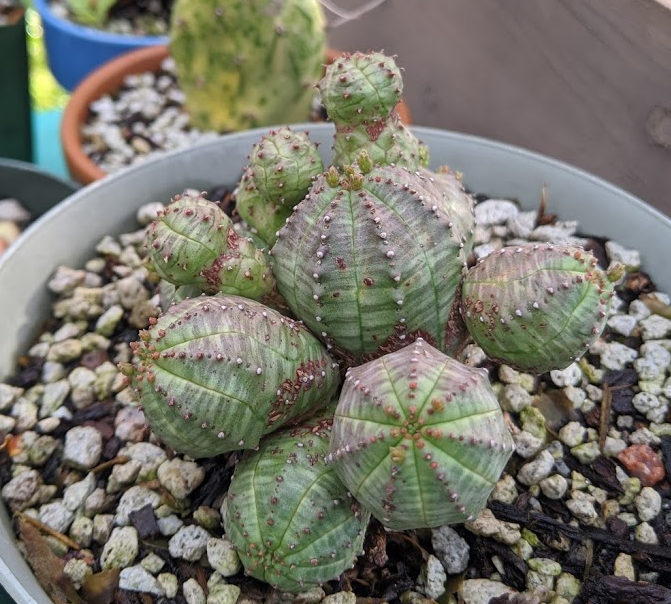
The plant at right is much older than mine, but it’s…sort of similar, right? 5 to 6 ribs, that greenish hue, bit of bark on older stems, aside from being squatter, it isn’t too outrageously different.
I figured with time and shade, it might grow longer stems, and placed it in the back of a shaded shelf where it was left to its own devices for nearly a whole year before I potted it up.
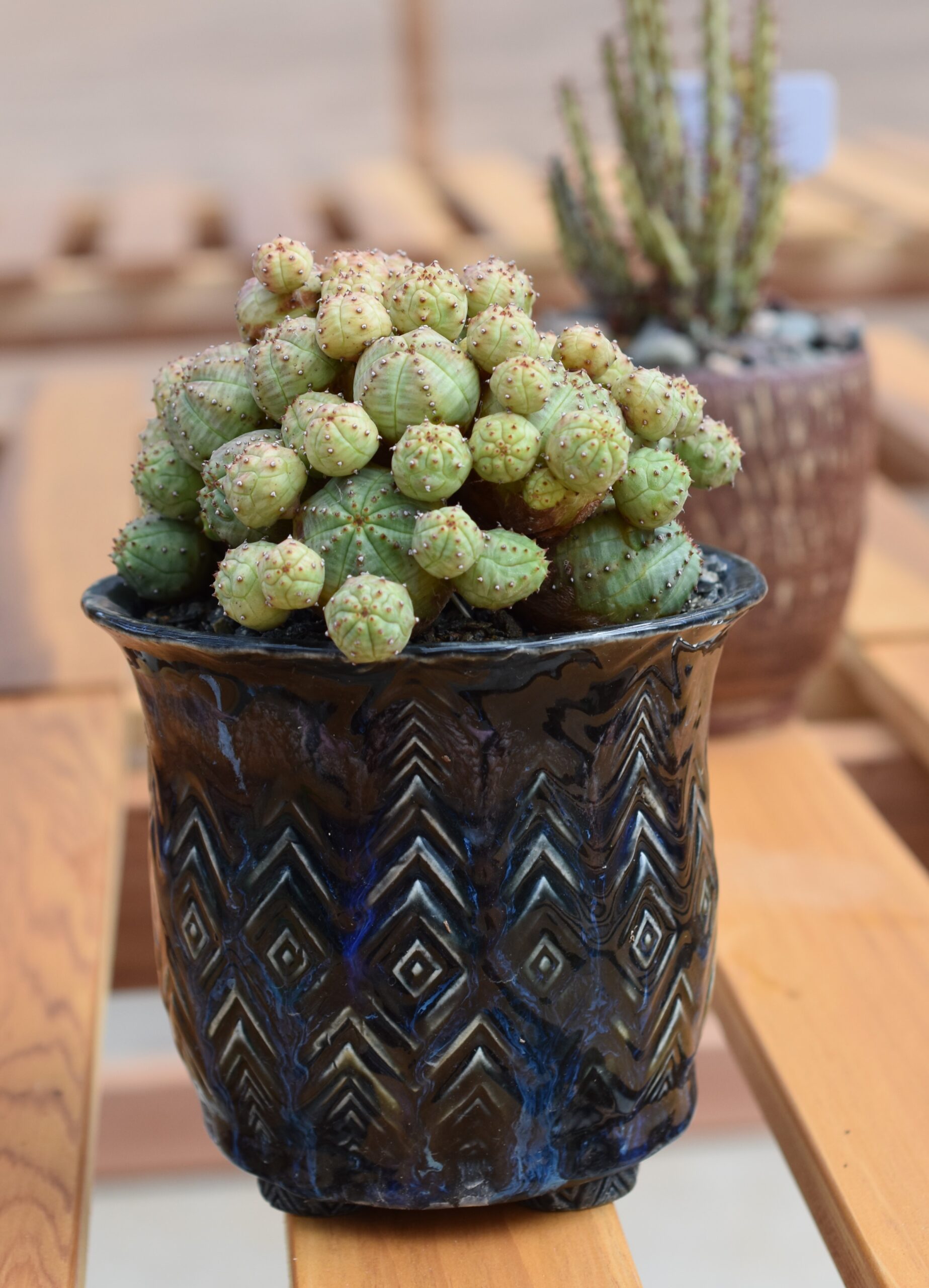
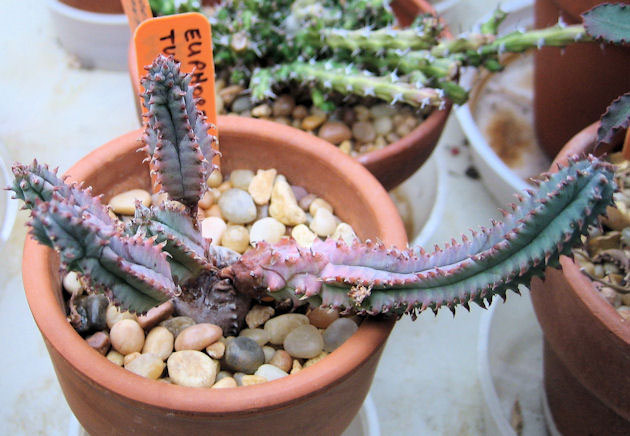
NONE OF THESE TUBIGLANS LOOK THE SAME.
Although they do all share that long stem-like growth habit.
You know what doesn’t have that long, stem-like growth habit?
My tubiglans.
My Euphorbia tubiglans doesn’t share the long, stem-like growth habit that seems so common in all the photos I can find – but it’s also not a terribly common Euphorbia, despite being delightfully easy to care for. The gentleman I got this from was someone I trust, based in Chicago, and he’d imported it as a part of a group of seed grown plants. Maybe this is the development of a well-watered, well-sunned tubiglans that is slow to stretch?
Care for Euphorbia tubiglans
This is, of course, assuming that my Euphorbia is indeed a tubiglans.
Very easy going succulent that thrives with very little effort. I mix an additional 20% pumice to the soil to ensure good drainage, but otherwise provide little else that’s special or different. The first two years I had the plant, it was in straight cactus and succulent soil and grew beautifully, so the additional pumice may not even be necessary.
One thing to consider is that if you want yours to develop a nice caudex (exceptional specimens have large, prominent caudexes), the internet seems to say that you need a seed grown plant for that to happen. The seed grown plants will develop a long tap root, and it’s that tap root that can be cultivated into a caudex. Plants grown from cuttings apparently will not do this as readily, although I only have the one plant, so I can’t tell you for sure.
For that nice fat tap root, you want good drainage, and for the root to not be too soggy for too long. That’s a big reason I added more pumice to the soil this time around, although I probably didn’t need to.
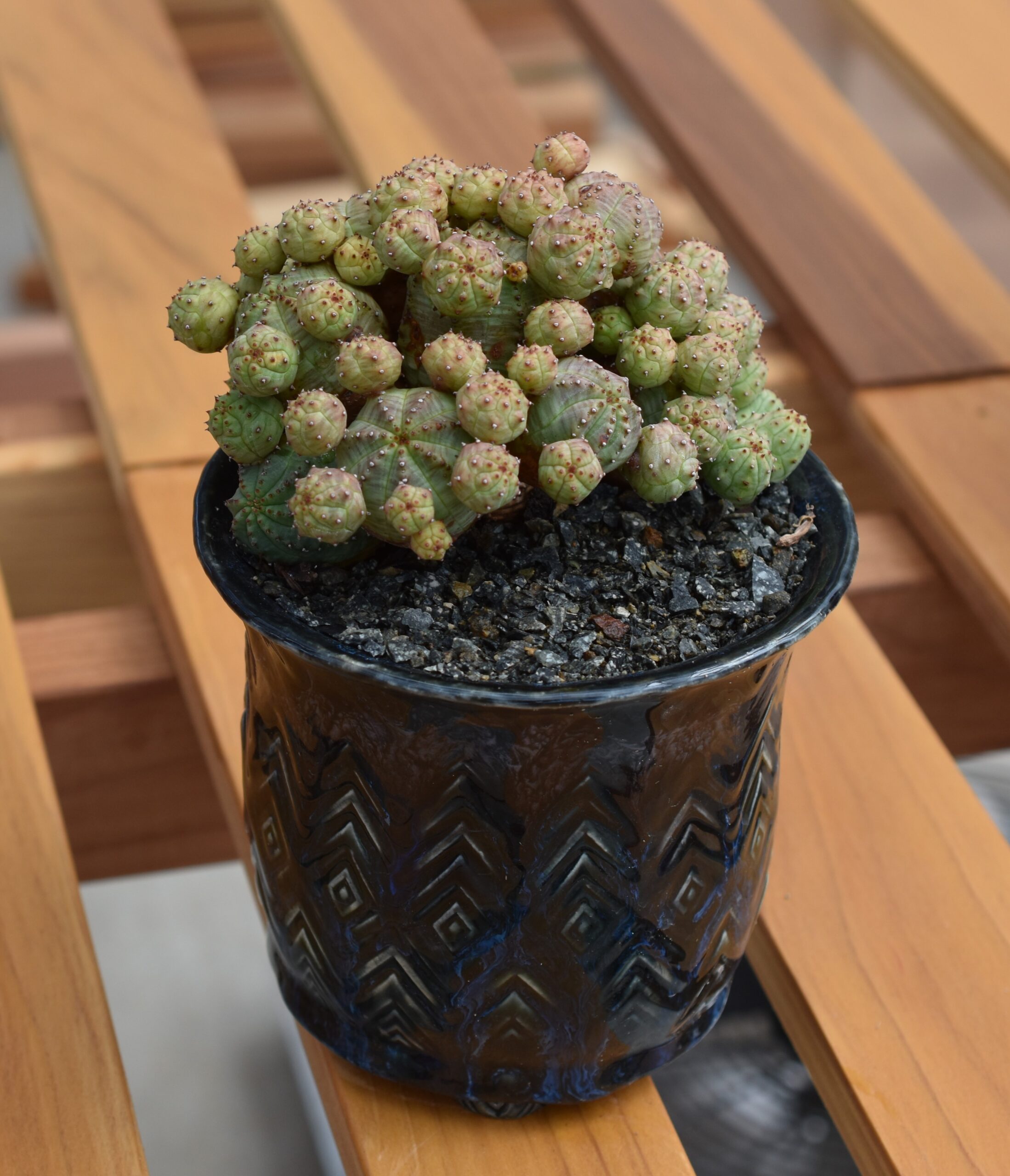
Water and Light
You can slowly introduce these to more sun, and they will darken up with a tan/brown shade rather than the brighter green color. You can compare the photo left to the photo above to see the difference between the “sunny” side of the plant in its current spot vs. the “shaded” side.
Watering is fairly simple – when the soil is dry, water until you see it draining through the bottom, and then leave it. It can go a few days or even a week or more with dry soil, and isn’t too fussy with some extra water during warmer months.
That’s really it when it comes to these.
Mine has thrived in winter lows in the high 20s/low 30s, although I’d recommend protecting yours against actually freezing. It was sheltered during our hail storm this spring, so it didn’t get any ice damage, and otherwise was unfazed by the cold.
It’s now in my greenhouse, with daytime highs in the 110-115F range on hot days, and seems fine. The “sunny” side is a bit pale for my liking – while it’s getting the browner color of sun stress, I would prefer to see it be a darker shade of brownish red, rather than the paler tan it’s been developing. The reason for this is heat stress vs sun stress. When the plant gets too hot, it starts turning into mush. One of the first signs that this is happening is that the plant goes pale, particularly on top. When it bleaches white, that means the chloroplasts that produce chlorophyll for the plants have died – and usually means the plant will die too.
If your plants are acclimated to higher temperatures gradually, they should be able to tolerate the high temperatures of 110+ during the day. My greenhouse currently can hit close to 115 even with the doors open, and the first day with the doors closed, it hit 125F. Without time to acclimate, those temperates can fry even heat-loving cacti!
This particular euphorbia got a little pale at first, but has been darkening over time, a sign that it’s acclimating and that the 40% shade cloth isn’t filtering out too much light.
Very cute plant, very easy to care for – and if / when I find out the accuracy of the latin name, I’ll update this post to reflect that!

